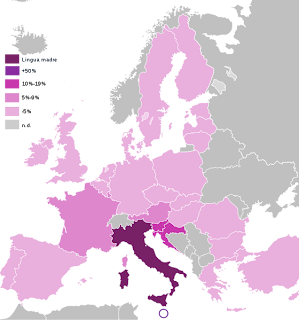Having listened to this, I thought that Accent Week may be an annual event, however,
I found that this is a one off, prompted by recent news stories on freedom of
dialects. In particular, OFSTED commented on the northern accent of a teacher
at Whitelands Park Primary School (Thatcham) and since then she has been told
to “sound more Sothern”. This has sparked an array of different viewpoints, I
have quoted some of these and have given my opinion below:
“It is the most extreme form of discrimination and bullying”
I completely agree with this; being instructed to change your accent is a form of regionalism where people are prejudicing against a specific area. I have considered that the comment may be against human rights and I found that in Article 1-3 of the United Nations Charter it says that we need to encourage fundamental freedom “without distinction as to race, sex, language, or religion.” Therefore, we need to allow people to talk in different languages (or in this case dialects) to reach equality.
“It’s difficult for the children…Sometimes I find it hard to understand people from up North”
This may be
true, but I am sure that if the northern accent affected her teaching in any
way she would have decided to tone down her accent herself, without any need of
outside stimulation. There is no proof that the teacher’s teaching was affected
so we should not assume that this is the case.
“We’re all English at the end of the day”
The English
language varies a lot between different areas in Britain and I think that this
variation ought to be celebrated. I think accents and dialects are very important
and it is a piece of your identity, therefore no one should be instructed to
change this.
The publication
of this story has made similar stories come into the press. For example, very
recently, Colley Lane Primary school pupils were given a list of regional
phrases that they were forbidden to say in school, for example ‘ay?’ instead of
‘pardon?’ Teachers justified this when they stated it is “getting them ready
for interviews”, but I do not think that this is acceptable.
People
should have the right to express themselves in whichever dialect they like so as long as this does not interfere with their work, I cannot see a
problem in regional accents. However, cases like this are becoming more frequent. In my secondary
school there was a scouse teacher who had been to speech therapy sessions to
learn RP so that she could act and teach. However, I think that this should be their own choice and not be expected of all teachers.
